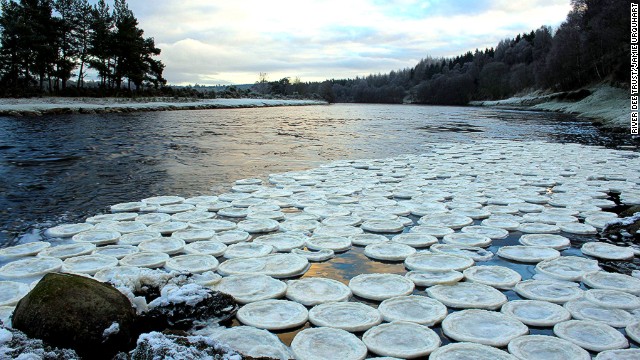Mysterious ice pancakes appear on Scottish river
December 18, 2014 -- Updated 1536 GMT (2336 HKT)
London (CNN) -- Here's another Scottish mystery to file alongside the Loch Ness Monster and Mel Gibson's accent in "Braveheart."
Ice pancakes.
These strange frozen
saucers were found during a recent cold snap near the River Dee -- a
salmon-filled waterway that passes by the British Queen's summer
residence, Balmoral Castle, before heading eastwards to the coastal city
of Aberdeen.
River Dee Trust biologist Jamie Urquhart made the discovery and took the photos at Lummels Pool, Birse -- several miles downstream of Balmoral.
The trust said it was
initially unsure what caused the pancakes, but supects they're caused by
a rare phenomenon in which foam freezes in a swirling eddy.
.
Rare occurrence
"Perhaps each disc grew
when smaller pieces of unfrozen foam struck the disc, adhered and then
froze in place," it wrote on its website.
"The raised rims are undoubtedly due to the collisions but what about the inner lines?
"The air temperature was
colder at night due to the clear-sky conditions but warmer in the day,
meaning the discs may have grown at night, then during the day, when the
discs softened in the sun, further collisions between the 'pancakes'
caused the rims to be pushed up.
"The next night further growth would have occurred, followed by a new rim the next day."
The Trust said it's the
first time the pancakes, more commonly found in the Antarctic or the
Baltic Sea, have been seen on the River Dee.


No comments:
Post a Comment